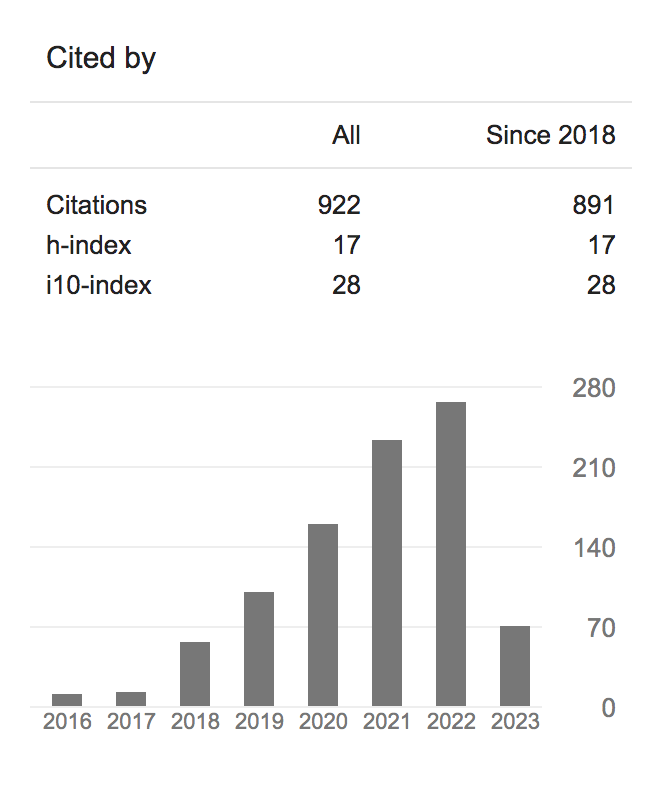Author Guidelines
We strongly prefer to receive manuscripts via our online submission system. Using this system, authors can upload manuscript files (text, figures and supplementary information, including video) directly to our office and check on the status of their manuscripts during the review process. First, kindly please register as author, and then you should login to submit your papers.
The manuscript texts are written in English or Indonesia. Editorial boards will first review manuscripts. The main text of a manuscript must be submitted as a Word document (.doc) or Rich Text Format (.rtf) file. The manuscript consists of 5000 words (minimum), well-typed in single column on A4 size paper, use 12 pt of Times New Roman. The manuscript contains an original work and have potentially contribute to the highly scientific advancement.
The manuscript should contain the following section in this order:
- Title
Title of articles in English should describe the main content of manuscripts, be informative, concise, and not too wordy (12-15 words only), and does not contain formulas. - The author’s name
Full name without academic degrees and titles, written in capital letters. Manuscript written by groups needs to supplement by complete contact details.
- Name of affiliation for each author
Complete affiliation address, postal code number, telephone number and email address should accompany the author name.
- Abstract
Written briefly in English in one paragraph of 150-200 words, containing background, research objectives, methodology, results, conclusion of the study and your research contributions to science.
- Keywords
Written in English 3-5 words or groups of words, written alphabetically.
- Introduction
Explaining the background, problems, and importance of research, brief literature review that relates directly to research or previous findings that need to be developed, and ended with a paragraph of research purposes. A balance must be kept between the pure and applied aspects of the subject. The introduction is presented in the form of paragraphs of approximately 1000 words.
- Methods
Make sure that work can be repeated according to the details provided. It contains technical information of the study presented clearly. Therefore, readers can conduct research based on the techniques presented. Materials and equipment specifications are necessary. Approaches or procedures of study together with data analysis methods must be presented.
- Results and Discussion
Well-prepared tables and or figures must be of significant feature of this section, because they convey the major observations to readers. Any information provided in tables and figures should no longer be repeated in the text, but the text should focus on the importance of the principal findings of the study. In general, journal papers will contain three-seven figures and tables. Same data can not be presented in the form of tables and figures. The results of the study are discussed to address the problem formulated, objectives and research hypotheses. It is higly suggested that discussion be focused on the why and how of the research findings can happen and to extend to which the research findins can be applied to other relevant problems.
- Conclusion
Conclusion should be withdrawn on the basis of research findings, formulated concerns and research purposes. Conclusion is presented in one paragraph without numerical form of expression. Explain your research contributions to science.
- Acknowledgement
Contributors who are not mentioned as authors should be acknowledged, and their particular contribution should be described. All sources of funding for the work must be acknowledged, both the research funder and the grant number (if applicable) should be given for each source of funds
- References
Manuscripts are written by using standard citation application (Mendeley/Endnote/Zotero). IEEE (Institute of Electrical and Electronics Engineers) reference style is required. Citing an article written by two authors, both of authors should be mentioned, however, for three and more authors only the first author is mentioned followed by et al., . Different publications with the same author(s) and year will be presented separately, as follows 2013a, 2013b. References of unpublished data and personal communication should not appear in the list but should be cited in the text only (e.g., Rifai MA 2015, pers. com. (personal communication); Indriyanti DR 2014, unpublished data). In the reference list, the references should be listed in an alphabetical order. More or less 80% references for literature reviews should be the recent (up to date) journals published in the last 10 years, but the rest of 20 % references can be cited from research reports and or articles. for example:
[1] Oliviero, Andrew and Woodward, Bill, “Cable Design†in Cabling The Complete Guide To Copper and Fiber
Optic Networking, 4th ed. United State of America : Wiley Publishing, Inc, 2009. pp. 19 – 33.
[2] J. Moran, Michael and Shapiro, H.N., Fundamentals Of Engineering Thermodynamics, 2nd ed. United States of America : John Wiiley and Son, 1993.
[3] B. Stanley, et al., C++ Primer, Fourth Edition, Massachusetts : Addison Wesley Professional, 2005.
[4] Bell, A. Graham, “Performance Tuningâ€, in Theory and Practise – Four Stroke, First Edition, United of Kingdom : Haynes Publishing, 1981.
[5] Editor, Abdul Basri Saifuddin,et al., Buku Acuan Nasional Pelayanan Kesehatan Ibu melahirkan dan Bayi lahir, 1st ed., Jakarta : Yayasan Bina Pustaka Sarwono Prawirohardjo, 2002














